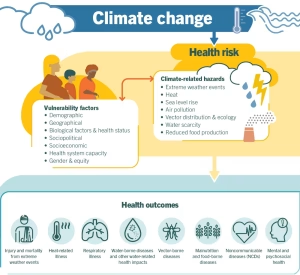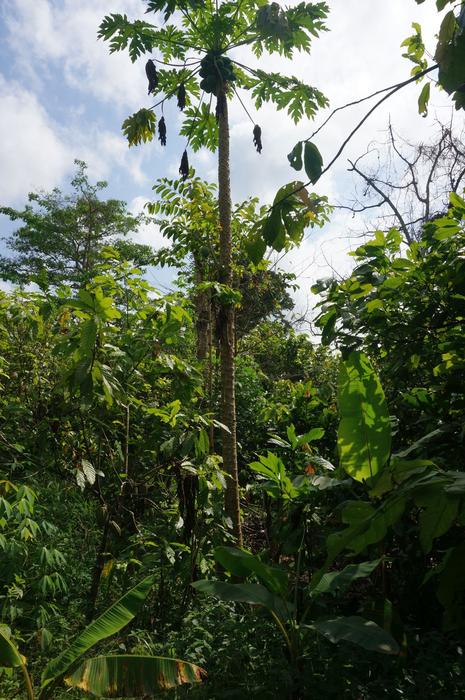Sea levels rising faster than in the past 4,000 years – Weather & Radar USA

Report on Accelerated Sea-Level Rise and Implications for Sustainable Development Goals
Executive Summary
This report analyzes recent findings on the rate of sea-level rise and its direct correlation with the United Nations Sustainable Development Goals (SDGs). Research from Rutgers University indicates that sea levels are rising at a pace unprecedented in the last 4,000 years, posing a significant threat to global sustainability targets, particularly those related to climate, marine life, and human settlements.
Key Research Findings
Unprecedented Rate of Sea-Level Rise
According to research conducted in New Jersey, the rate of sea-level rise has accelerated significantly since the beginning of the 20th century. This modern rate of increase is greater than at any point in the previous four millennia.
Primary Causal Factors
The study attributes this accelerated rise to two main phenomena directly linked to global warming:
- The thermal expansion of warming oceans.
- The melting of glaciers and continental ice sheets.
A notable contributor is the accelerated rate of ice loss observed in Greenland.
Impact on Sustainable Development Goals (SDGs)
Direct Challenges to the 2030 Agenda
The findings present a critical challenge to the achievement of the 2030 Agenda for Sustainable Development. The consequences of rising sea levels directly undermine progress across multiple interconnected goals.
Analysis of Key Affected SDGs
-
SDG 13: Climate Action
The data provides conclusive evidence of the severe impacts of climate change, reinforcing the urgent need for global action to reduce greenhouse gas emissions and mitigate further warming. The failure to address climate change directly results in consequences like sea-level rise, jeopardizing all other goals.
-
SDG 14: Life Below Water
Ocean warming, a primary driver of sea-level rise, causes ocean acidification and coral bleaching, severely damaging marine ecosystems. Rising sea levels also destroy coastal habitats such as mangroves and wetlands, which are crucial for marine biodiversity and the conservation of life below water.
-
SDG 11: Sustainable Cities and Communities
Coastal communities, home to a significant portion of the global population, are directly threatened by flooding, erosion, and saltwater intrusion into freshwater supplies. This jeopardizes infrastructure, housing, and economic stability, making it imperative to build resilient and sustainable cities capable of adapting to these climate-induced changes.
-
SDG 1: No Poverty & SDG 6: Clean Water and Sanitation
Rising sea levels disproportionately affect vulnerable populations in low-lying coastal areas, leading to displacement, loss of agricultural land, and destruction of livelihoods. This exacerbates poverty and threatens food security. Furthermore, the intrusion of saltwater contaminates freshwater sources, creating a direct challenge to ensuring access to clean water and sanitation.
1. Which SDGs are addressed or connected to the issues highlighted in the article?
-
SDG 13: Climate Action
This is the most directly relevant goal. The article’s central theme is the accelerated rise in sea levels, which it attributes to “the warming of the oceans and the melting of glaciers and ice sheets.” These are all direct consequences and indicators of climate change, making climate action essential to address the root causes.
-
SDG 14: Life Below Water
The article explicitly mentions “the warming of the oceans” as a primary cause of sea-level rise. Ocean warming is a major threat to marine ecosystems, biodiversity, and the overall health of the oceans. Therefore, the issues discussed are intrinsically linked to the conservation and sustainable use of marine resources.
-
SDG 11: Sustainable Cities and Communities
Rising sea levels pose a significant threat to coastal cities and communities worldwide. Although not directly mentioned, the consequences of the phenomena described in the article include increased risk of flooding, erosion, and displacement of populations, which directly impacts the safety and sustainability of human settlements.
2. What specific targets under those SDGs can be identified based on the article’s content?
-
SDG 13: Climate Action
-
Target 13.1: Strengthen resilience and adaptive capacity to climate-related hazards and natural disasters in all countries.
The article highlights a major climate-related hazard—accelerated sea-level rise. This directly necessitates actions to improve the resilience of coastal areas and their ability to adapt to the inevitable consequences.
-
Target 13.2: Integrate climate change measures into national policies, strategies and planning.
The scientific findings presented in the article, such as the rapid melting of ice in Greenland, underscore the urgency for governments to incorporate climate change mitigation and adaptation measures into their national planning to address the causes and effects of sea-level rise.
-
Target 13.1: Strengthen resilience and adaptive capacity to climate-related hazards and natural disasters in all countries.
-
SDG 14: Life Below Water
-
Target 14.2: By 2020, sustainably manage and protect marine and coastal ecosystems to avoid significant adverse impacts, including by strengthening their resilience, and take action for their restoration in order to achieve healthy and productive oceans.
The “warming of the oceans” mentioned in the article is a significant adverse impact on marine ecosystems. This target is relevant because protecting these ecosystems requires addressing such climate-related stressors.
-
Target 14.2: By 2020, sustainably manage and protect marine and coastal ecosystems to avoid significant adverse impacts, including by strengthening their resilience, and take action for their restoration in order to achieve healthy and productive oceans.
-
SDG 11: Sustainable Cities and Communities
-
Target 11.5: By 2030, significantly reduce the number of deaths and the number of people affected and substantially decrease the direct economic losses relative to global gross domestic product caused by disasters, including water-related disasters, with a focus on protecting the poor and people in vulnerable situations.
The rapid sea-level rise described in the article directly increases the risk of water-related disasters like coastal flooding, making this target highly relevant for protecting vulnerable communities.
-
Target 11.b: By 2020, substantially increase the number of cities and human settlements adopting and implementing integrated policies and plans towards inclusion, resource efficiency, mitigation and adaptation to climate change, resilience to disasters…
This target is connected as the threat of rising sea levels requires cities and settlements to develop and implement plans for climate change adaptation and disaster resilience.
-
Target 11.5: By 2030, significantly reduce the number of deaths and the number of people affected and substantially decrease the direct economic losses relative to global gross domestic product caused by disasters, including water-related disasters, with a focus on protecting the poor and people in vulnerable situations.
3. Are there any indicators mentioned or implied in the article that can be used to measure progress towards the identified targets?
-
SDG 13: Climate Action
-
Implied Indicator: Rate of sea-level rise.
The article’s headline and core message are about “Sea levels rising faster than in the past 4,000 years.” This rate is a critical physical science indicator used to track the progression of climate change and its impacts, relevant to Target 13.1.
-
Implied Indicator: Rate of glacier and ice sheet melt.
The article specifically points to the “melting of glaciers and ice sheets – with ice loss accelerating significantly in Greenland” as a cause. The mass balance of glaciers and ice sheets is a key indicator of global warming and its contribution to sea-level rise.
-
Implied Indicator: Rate of sea-level rise.
-
SDG 14: Life Below Water
-
Implied Indicator: Ocean temperature / Ocean heat content.
The article identifies the “warming of the oceans” as a primary driver. Measuring changes in ocean temperature is a direct indicator of the stress on marine ecosystems and is fundamental to understanding the health of the oceans, as addressed in Target 14.2.
-
Implied Indicator: Ocean temperature / Ocean heat content.
-
SDG 11: Sustainable Cities and Communities
-
Implied Indicator: Number of people and settlements affected by coastal flooding.
While the article focuses on the cause (sea-level rise), it implies the effect, which is an increased risk of disasters for coastal communities. An indicator measuring the number of people affected by such events would track progress towards Target 11.5.
-
Implied Indicator: Number of people and settlements affected by coastal flooding.
4. Table of SDGs, Targets, and Indicators
| SDGs | Targets | Indicators |
|---|---|---|
| SDG 13: Climate Action |
13.1: Strengthen resilience and adaptive capacity to climate-related hazards.
13.2: Integrate climate change measures into national policies. |
Implied: Rate of sea-level rise.
Implied: Rate of glacier and ice sheet melt (e.g., in Greenland). |
| SDG 14: Life Below Water | 14.2: Sustainably manage and protect marine and coastal ecosystems to avoid significant adverse impacts. | Implied: Ocean temperature / Ocean heat content. |
| SDG 11: Sustainable Cities and Communities |
11.5: Significantly reduce the number of people affected by disasters, including water-related disasters.
11.b: Increase the number of cities adopting plans for adaptation to climate change and resilience to disasters. |
Implied: Number of people and settlements affected by coastal flooding. |
Source: weatherandradar.com
What is Your Reaction?
 Like
0
Like
0
 Dislike
0
Dislike
0
 Love
0
Love
0
 Funny
0
Funny
0
 Angry
0
Angry
0
 Sad
0
Sad
0
 Wow
0
Wow
0
















































:focal(1500,1000)/https://media.globalcitizen.org/a6/9a/a69a4720-d8a1-4715-b596-18738d03c05c/rotary_polio_hero_image.jpg?#)







/countries/sri-lanka/photo-credit---dmc-sri-lanka.tmb-1200v.jpg?sfvrsn=dc298bcc_1#)


















